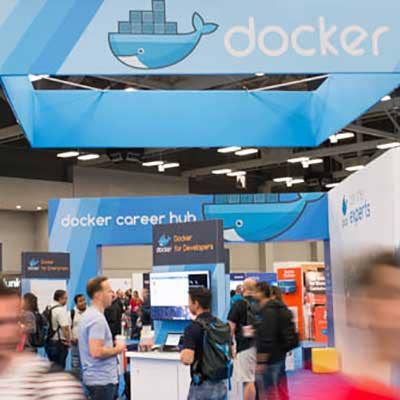Docker Releases Enterprise Edition 2.0

Docker released a major update to its container management platform Tuesday that introduces functionality to better support large enterprises building and deploying applications across diverse and distributed environments.
Docker Enterprise Edition 2.0 extends the container pioneer's strengths around operational efficiency and security for a growing base of multinational customers' operating infrastructure that spans geographies, operating systems, and container orchestrators, David Messina, Docker's senior vice president of marketing, told CRN.
"What's in this release is a culmination of working with these customers, and making sure we [are supporting] their needs and requirements to scale the containerization opportunity they're grabbing hold of on a global scale," Messina told CRN.
[Related: Docker's Founder Leaves A Game-Changing Startup That's At A Critical Crossroads]
Enterprise Edition 2.0, a major milestone for the San Francisco-based company, aims to secure the software supply chain over a global footprint, and ease adoption of Kubernetes, an orchestration technology Docker once shunned.
Many of Docker's more than 450 commercial customers are running containerized workloads for different business units across countries and continents. They want to support hundreds, if not thousands, of apps on different versions of Linux and Windows, both on-premises and in multiple public clouds, Messina said.
Docker looks to differentiate itself from container-oriented Platform-as-a-Service solutions, such as Red Hat's OpenShift, with the flexibility of environments and workloads it supports, including legacy apps not built with cloud-native methodologies.
"The history of our platform has always been to make complex constructs accessible and extensible," Messina said. "That's the difference between Docker EE and the PaaS providers and their support for Kubernetes."
Enterprise Edition 2.0 is the first release to make generally available Docker's integration of Kubernetes. Docker was late to embrace that orchestration technology, previously maintaining exclusive support for Docker Swarm, a home-grown solution.
Now having embraced Kubernetes, which is gobbling market share, the latest Enterprise Edition release looks to simplify and automate workflows, enabling organizations to rely on their existing teams to operationalize the technology, rather than having to go recruit outside experts, Messina said.
"That's something we do that a PaaS platform like OpenShift doesn't," Messina said of the rival Red Hat product.
Another significant differentiator in 2.0 is the ability to run Swarm and Kubernetes in the same server cluster, said Jenny Fong, Docker's director of product marketing.
"We aren't stopping our investment in Swarm," Fong said, and the latest release offers Swarm enhancements.
Enterprise Edition 2.0 also makes strides in securing the software supply chain through the entire lifecycle of the application—from the time the developer starts coding through the testing process and deployment into production.
A new feature, called Secure Application Zones, helps avoid an emerging security problem—container cluster sprawl.
With the feature, customers can establish multiple zones, each with their own enforcement policies for resource access, and run many applications in the same cluster.
Other new features, including image mirroring and image caching, allow multinational customers to develop and deploy software across regions and time zones without breaking the supply chain, she said.
Alex Rhea, cloud enablement leader at Cloudreach, an international cloud computing consultancy that partners with Docker, told CRN that extending Docker's security features to Kubernetes will make the technology "much more approachable" for enterprises.
"Kubernetes has traditionally been difficult for IT organizations to set up, secure, and maintain," Rhea said.
Docker Enterprise Edition tools for securing software delivery, when coupled with Kubernetes, will reduce operational overhead and time-to-market for many applications.
The release makes the orchestration layer "table stakes," Rhea told CRN, allowing engineers to select the right orchestrator for the right task.
"We are focusing on helping customers build secure software pipelines that are cryptographically verified from developer machine to production cluster. Docker EE provides the tooling for an enterprise to adopt containers across public and private clouds with a single secure control plane," Rhea said.